#Russia-Ukraine conflict
Text
Putin to chair Russia Security Council meeting after humiliating explosion on strategic Crimea bridge | CNN
Putin to chair Russia Security Council meeting after humiliating explosion on strategic Crimea bridge | CNN
CNN
—
Russian President Vladimir Putin will hold an operational meeting of his Security Council on Monday, just two days after a massive explosion on a key strategic bridge linking Crimea and Russia.
The meeting itself isn’t out of the ordinary – Putin regularly holds operational meetings with the Security Council, usually on a weekly basis, according to TASS. However, it comes just days…

View On WordPress
#accidents#business#business and industry sectors#conflicts and war#continents and regions#crimea#disasters and safety#eastern europe#economy and trade#europe#explosions#government and public administration#government bodies and offices#local governments#military#military weapons#political figures - intl#roads and traffic#Russia#russia-ukraine conflict#transportation and warehousing#transportation infrastructure#Ukraine#unrest#Vladimir Putin#weapons and arms
10 notes
·
View notes
Text
BREAKING NEWS: KYIV, MOSCOW HAIL ODESA GRAIN SHIPMENT
The first shipment of Ukrainian grain has left the Black Sea port of Odesa in a move hailed by Kyiv and Moscow.The ship is destined for Lebanon but will be jointly inspected off the coast of Istanbul under the terms of a UN-brokered deal.Moscow claims its forces have destroyed two United States-made HIMARS rocket systems in Ukraine.
The Razoni, bound for Lebanon, is carrying more than 26,000…

View On WordPress
#EU#Kyiv#Lebanon#Moscow#Odesa Port#Romania#Russia-Ukraine conflict#Russian forces#The first shipment of Ukrainian#The Sierra Leone-flagged Razoni#Turkey#U. S#UK#Ukraine#Ukraine President Volodymyr Zelensky#UN#USA#Vladimir Putin
4 notes
·
View notes
Text
'They hated him.' Former subordinate recalls serving under Russia's new top commander in Ukraine | CNN
‘They hated him.’ Former subordinate recalls serving under Russia’s new top commander in Ukraine | CNN
CNN
—
Russian President Vladimir Putin’s devastating war on Ukraine is faltering. Now, there’s a new general in charge – with a reputation for brutality.
After Ukraine recently recaptured more territory than Russia’s army took in the last six months, Russia’s Ministry of Defense last Saturday named Sergey Surovikin as its new overall commander for operations in the war.
Notably, he…
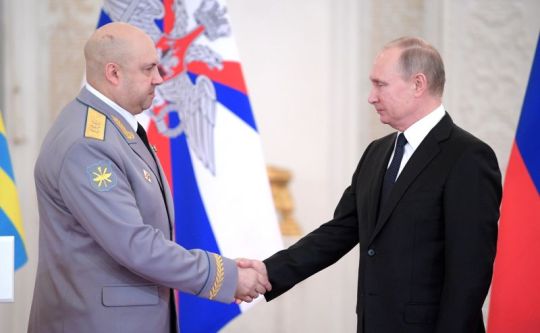
View On WordPress
#armed forces#conflicts and war#continents and regions#eastern Europe#europe#Middle East#middle east and north africa#military#Political Figures - Intl#Russia#Russia-Ukraine conflict#Syria#Ukraine#Unrest#Vladimir Putin
2 notes
·
View notes
Text
Russian Catholics, including clerics, fear conscription
Russian Catholics, including clerics, fear conscription
A senior Russian priest said many young Catholics fear being forced into conscription along with their priests to join the war against Ukraine.
The priest, who asked not to be named, also dismissed President Vladimir Putin’s threats of nuclear war as “just words”.
“Although I’m not a military person, I don’t think the Russian army could even use nuclear weapons — and if it did, this would be much…
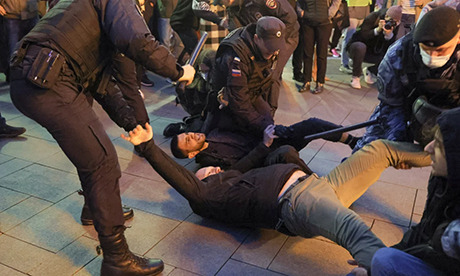
View On WordPress
#President Vladimir Putin#Russia-Ukraine conflict#Russian Catholic Church#Russian military conscription
2 notes
·
View notes
Photo
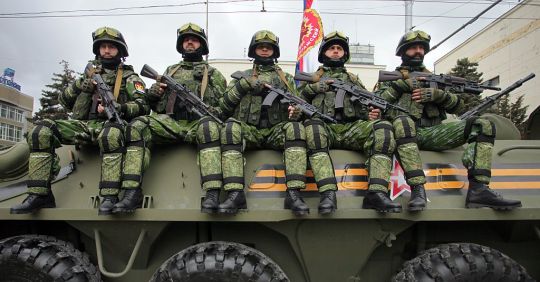
“Vera Iastrebova, a Donetsk lawyer and labor movement activist, reported on social media on February 26 that mothers and wives in the Donetsk and Luhansk “people’s republics�� were desperately seeking ways to protect their menfolk from compulsory mobilization in the now-unfolding war.
“They call and say that the men are being taken from the [coal] mines and sent straight to the front, even though they have no military experience,” Iastrebova wrote.
Earlier in the week, activists in Ukrainian government–controlled territory had heard from their comrades in the “republics” that, since their militia had not conscripted sufficient soldiers, the over-fifty-fives were being called up.
Such realities stand in bleak contrast to the Kremlin’s rhetoric about the statelets as bastions of opposition to a “Nazi” regime.
The areas, known in Russian as Donetskaya Narodnaya Respublika (DNR) and Luganskaya Narodnaya Respublika (LNR), comprise the eastern part of the Donetsk and Luhansk regions respectively; the western parts have remained under Ukrainian government control even after 2014. Despite the “people’s republic” names, they have routinely intimidated organized labor and political dissidents, institutionalized violence, and trampled on human rights. They have also presided over the collapse of industry and a catastrophic fall in living standards.
The harsh conditions normalized since these statelets were founded in 2014 are not an exact guide to how Russian-supported forces, or Russia itself, might administer other parts of Ukraine if they take them over by force. But the misery heaped on the population of these “people’s republics” across the last eight years does give some indications.
Here, I shall focus first on the preparations for President Vladimir Putin’s announcement on February 21 that Russia recognizes the “republics,” followed on February 24 by the full-scale invasion of Ukraine. I then outline how the “republics”’ economies, politics, and labor movements have changed since their creation eight years ago.
The Run-Up to Recognition
By the end of the 2014–15 war in Eastern Ukraine, extreme Russian nationalists’ aspirations to establish the state of Novorossiya, comprising Ukraine’s six southeastern regions, had been abandoned. Putin had referred to the idea in speeches in 2014 but then shelved it. The two “people’s republics” were to remain separate from each other and from Russia.
The Minsk II agreement of 2015 required Ukraine to decentralize and armed formations to withdraw, but neither happened, and at first Moscow appeared content to leave these statelets as they were, a thorn in the side of the Ukrainian state.
The first sign that the Kremlin’s policy was shifting toward recognition and/or integration was the drive, kick-started by two presidential decrees in mid-2019, to grant Russian citizenship to Russian-speaking Ukrainians, both in the “republics” and in Ukrainian-controlled territory. More than 800,000 passports have now been distributed — equivalent to more than one-third of the statelets’ remaining adult population.
A report by the Eastern Human Rights Group (EHRG), founded by trade union activists displaced from Donetsk to Ukrainian-controlled territory, concluded that “passportization” was part of a drive toward “permanent [Russian] control” of the “republics.” It went with militarization (specifically, the introduction of “military-patriotic” education in schools and sports clubs) and integration of the education system with Russia’s.
Prior to the 2021 parliamentary election in Russia, residents of the “republics” were encouraged to vote online or bused to polling stations in the Rostov region of Russia. Halya Coynash of the Kharkiv Human Rights Protection Group reported that residents were being “enrolled en masse” into United Russia (UR), the dominant, pro-Putin party in the Russian parliament.
On Election Day last year, Dmitry Sablin, a leading UR parliamentarian, arrived in Donetsk and announced that an experiment was underway in “uniting this territory with Russia.” A barrage of similar sound-bites led observers to believe that the Kremlin was considering annexation, rather than recognition, of the “republics.”
The way for UR’s propaganda offensive had been paved by the Russian parliament’s loyal opposition parties, A Just Russia — for Truth (Spravedlivaya Rossiya — Za Pravdu, SRZP) and the Communist Party of the Russian Federation (CPRF), whose representatives had travelled to Donbas regularly since 2015. Sergey Mironov, former chairman of the Russian parliament’s upper house and leader of A Just Russia, a nominally social democratic but fiercely nationalist party, was an early advocate of integration of the “republics” with Russia. And it was CPRF deputies that last month made the motion in the Russian parliament — which UR then supported — urging Putin to recognize the “republics.” Two CPRF deputies have since protested against the war itself.
The promotion of the “Russian world” — which, in Putin’s view, includes swaths of Ukraine and other former Soviet states, as well as Russia itself — has a vicious side: the “republics” set their violent, arbitrary law enforcement agencies on Ukrainian speakers and supporters of the Ukrainian government. Top of a list of assaults on freedom of expression in 2019–21, compiled by the United Nations’ human rights agency, was the 13.5-year jail sentence handed to a Luhansk businessman who publicly expressed pro-Ukrainian views.
Three men arrested in 2020, for singing songs in Ukrainian, praising the Kiev government, and criticizing the Luhansk authorities, were still locked up without trial when the report was published in October 2021. The Luhansk “people’s republic” does not share information with the UN, and so their whereabouts remained unknown.
The slide toward integration has also heaped tragedy on residents of the “republics” who need to travel to Ukrainian government–controlled territory, including many social benefits recipients. Most crossing points across the separation line were closed during the COVID-19 pandemic. Local transport operators started offering trips via Russian territory; Ukrainian border officials were fining many people who made these journeys, until protests by community activists got the law changed.
From Powerhouse to Wasteland
The Donbas (i.e., the Donetsk and Luhansk regions, of which the “republics” occupy parts) was, historically, a renowned center of coal mining, steelmaking, and chemicals production.
As Ukraine recovered from the disastrous economic slump that followed the breakup of the Soviet Union in 1991, the Donbas economy leaned increasingly on exports of steel, coal, and railway locomotives. Russia remained its largest market. Other regions’ economies grew faster, benefiting in some cases from newer industries and services. But the 2014–15 war, and the division of the Donbas that followed, uprooted its population and trashed its industrial base.
By 2021, the war had claimed an estimated 14,000 lives, of which about four thousand were civilians, and left an estimated 30,000 injured. It dispersed much of the population of the Donbas: of a prewar population of 6.6 million, an estimated 3.3 million people have fled their homes. Of these, 1.8 million have been living as internally displaced persons (IDPs) in Ukraine and 1.5 million in Russia and Belarus. Whole towns and villages have been emptied of their populations.
And even before the Russian invasion this year, the UN categorized the Donbas as one of the world’s most mine-contaminated areas in the world.
In the first four years of conflict (2014–17), Donbas’s economy shrunk by 61 percent, the economist Vlad Mykhnenko found — largely due to “rapid and severe deindustrialization.” Luhansk’s industrial output fell by more than four-fifths, and Donetsk’s by half. Dozens of mines have closed and flooded, while small-scale, informal coal production has been de facto legalized. Steel works and manufacturing capacity lie idle.
Foreign trade collapsed, with Luhansk’s grinding almost to a halt and Donetsk’s falling by nearly two-thirds. What remains of the statelets’ economy is closely linked to Russia’s, and the ruble has been the main currency since 2015.
Living standards have crashed. Mykhnenko showed that in 2017 average wages in the Donetsk “people’s republic” were $174/month (38 percent of the pre-2014 level) and in the Luhansk “republic” $229/month (56 percent of the pre-2014 level). Nonpayment of wages is endemic.
Unemployment in the government-controlled parts of Donbas was 14-16 percent in 2018. No statistics were available for the “people’s republics,” but the level is similar. At the same time, there is a shortage of skilled labor, including medical staff, mine workers, and educators. Skilled workers leave if they can, a survey by the EHRG showed: labor migration to Russia is encouraged by the authorities.
Before 2014, much of Donbas heavy industry was controlled by the SKM financial group, whose owner, Rinat Akhmetov, is one of Ukraine’s richest politically influential businessmen (oligarchs). In February 2017, Ukrainian nationalists linked to Igor Kolomoisky, a competing oligarch, blockaded exports of Akhmetov’s coal from the “republics” to Ukraine. The action was opposed by organized labor.
The separatists’ armed forces responded by seizing Akhmetov’s assets, and — despite some rhetoric about “nationalization” — handed them to Vneshtorgservis (VTS), a company registered in South Ossetia, a Russian-occupied enclave in Georgia, and controlled by Serhiy Kurchenko, a billionaire linked to former Ukrainian president Viktor Yanukovich. (In mid-2021, Kurchenko was replaced by Yevgeny Yurchenko.)
The cooperation between VTS and the political and military leadership of the “people’s republics,” as well as Russian elite circles, goes far beyond a “revolving-door” effect. Most observers see them as inseparable.
The sociologist Serhiy Kudelia wrote in 2017, “In reality, the ‘republics’ are beginning to acquire the features of a military bureaucratic regime, in which military personnel and officials dominate society through coercion and the monpolisation of the distribution of wealth.”
The economic disaster in the “people’s republics” cannot be attributed to their political leaderships alone; it is largely the product of war and recession. But it is a terrible fact of twenty-first-century capitalism that the economy could have been turned around, and the transition to new types of industry begun, with only a fraction of the resources that the Russian state is now plunging in to laying waste to Ukraine.
Labor and Authoritarian Control
The militarized authorities in the “people’s republics” have drastically cut down space for social and political activity. A UN report concluded that there is no public discussion of “more sensitive political topics” due to “fear and self-censorship” and that protests over economic conditions, such as strikes, face “serious consequences, including arbitrary detention.”
Despite the statelets’ name, real popular involvement in politics faces sharp institutional limits. In the Donetsk “people’s republic,” military authorities in 2014 introduced a “nonparty democracy” (!). The “people’s council” wields political power and allows one legal party, the Communist Party of the Donetsk People’s Republic — although it excluded Communist Party representatives from its own ranks in 2016. Parliament is dominated by two “social movements,” with a high proportion of military commanders in their ranks. The researcher Kimitaka Matsuzato has shown how Vladislav Surkov, the Kremlin power broker, worked with Donetsk officials to put the system together.
Organized workers’ action has been extremely rare in the “republics.” The most well-known action of recent years was an underground sit-in by 119 mine workers, over months’ worth of unpaid wages, at the Komsomolskaya mine in Antratsyt. Fourteen activists were arrested under article 252 of the statelet’s criminal code, which penalizes “repeated breach of established order, organization or conduct of assemblies, meetings, demonstrations, marches or pickets” with up to five years in prison. The dispute ended when they were released, and part of the outstanding wages were paid.
The public intimidation of civil society is backed up by a less transparent system of torture, humiliation, and forced labor in military prisons. The journalist Stanislav Aseyev, who spent thirty-one months in custody in Donetsk in 2017–19 and was released in a prisoner exchange, documented physical torture (electric shock treatment and beating of the genitals), rape of men and women, and other mistreatment, of himself and others.
The trade union activists of EHRG exposed the use of slave labor in Luhansk prisons in a 2016 report. Prisoners convicted under Ukrainian law before 2014 found themselves at the mercy of an extralegal regime that put prisoners to work in joinery and metalworking shops, and other production, without pay.
Prisoners who refused to work were severely beaten by armed, masked men; kept in solitary confinement with no food or water for three days; and forced by the threat of beating to stand for eight to ten hours in the burning sun. When prisoners protested collectively, guards called special detachments from the statelet’s internal affairs ministry to attack them.
Trade union activists and human rights defenders have mostly left the “people’s republics,” after a crackdown in 2014; those who stayed keep “low profiles in fear of persecution,” the UN report stated. Women’s rights organizations and support groups for victims of domestic violence, too, operate in the shadows.
Groups that have organized in the Ukrainian-controlled parts of the Donbas, and supported social movements in the “republics” when opportunities have arisen, include:
The EHRG, which has supported independent worker organization. Pavel Lisyansky, a lawyer with EHRG and former miners’ union official, said in a 2017 interview that the union structures approved by the “republics” had been “formed to control workers.” Worker militants in the “republics” have “no law, no rights, people are defenceless.”
The pacifist group Black Days of Donbas, set up by Enrike Menendez (a Donbas citizen of Spanish heritage). It demands that the Ukrainian government name a day to remember the civilian deaths of the war in Eastern Ukraine.
Women’s organizations, including: the Women’s Human Rights Group, formed in 2017 by Irina Nikulnikova, a lawyer, in response to anger over unpaid wages at the coal company Lisichanskugol; a group started by Vera Iastrebova that staged a march for women’s rights on International Women’s Day in 2018 at Lisichansk; and the Civil Inspection of Labor group, formed in 2014 in Debaltsevo to defend labor rights, social and economic rights, and women’s rights.
The Donbas “people’s republics” have, throughout their existence, been politically and militarily supported by the Russian government. Their economies are closely tied to Russia’s. Should Russia retain control of other parts of Ukraine, elements of this type of rule may be replicated.”
- Simon Pirani, “The Russian Statelets in the Donbas Are No “People’s Republics.” Jacobin. March 2, 2022.
#donetsk people's republic#lugansk people's republic#russia-ukraine war 2022#russia-ukraine conflict#ukrainian civil war#ukrainian politics#russian imperialism#russian federation#authoritarian regime#analysis#donbas
2 notes
·
View notes
Text
youtube
#youtube#news#Transatlantic Relations#Foreign Press Center#Press Conference#Washington Summit#International Cooperation#US-Europe Relations#Security Alliance#NATO#Crisis Management#Conflict Resolution#International Relations#European Union#Diplomacy#Journalism#Ukraine War Update#Current Events#Foreign Policy#Global Politics#Russia-Ukraine Conflict#News Update#State Department#Transatlantic relations#Ukraine war#Washington Summit Road#Russia#conflict resolution
0 notes
Text
Biden Pushes for Urgent Approval of $60 Billion Aid Package for Ukraine Amidst Fears of Trump Victory
In a race against time, the Biden administration is working fervently to secure a $60-billion aid package for Ukraine, facing obstacles from Republicans in Washington’s legislature. The urgency stems from concerns that a potential victory by Donald Trump in the upcoming presidential election could lead to a significant reduction in US financial support for Ukraine’s war effort, as reported by…

View On WordPress
#Biden#Fiscal year 2024#Intelligence assessments#NATO#Reelection#Russia-Ukraine conflict#Trump victory#Ukraine Aid#Washington legislature
0 notes
Text
Ukrainian guerrillas discover defense secrets of Russian soldiers in Yevpatoria
Russian occupiers are making efforts to prepare the defense in Yevpatoria, Crimea. To do this, the Russian invaders are setting up a large number of engineering and fortification structures, according to the Atesh guerrilla movement.
Click the link for more details https://worldtimenews123456.blogspot.com/2024/01/ukrainian-guerrillas-discover-defense.html
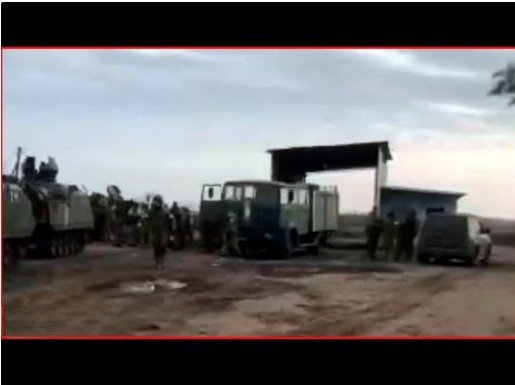
0 notes
Link
#war update#russia-ukraine#russia-ukraine crisis#russia-ukraine war#russia-ukraine conflict#ukraine#ukraine russia war#ukraine russia news#ukraine russia conflict#ainews18.com
0 notes
Text
This Week In The Nerd Fandom: August 1st, 2023
Don't Be Mad, This Week In The Nerd Fandom Is Back! Focusing on the biggest news topics in the Nerd Fandom.
#anime #manga #videogames #MortalKombat #comicbooks #Netflix #KamenRiderGotchard #Digimon
Welcome to another edition of This Week In The Nerd Fandom, we’ll be rounding up several big news topics that have happened during the week.
Mushoku Tensei: Jobless Reincarnation Season Two Prepares for Ranoa Magic Academy
Image Credit: Rifujinnamagnote/MFBOOKS/Mushoku Tensei: Jobless Reincarnation II Production Committee
After a problematic beginning for our Rudeus, we’re about to head back…
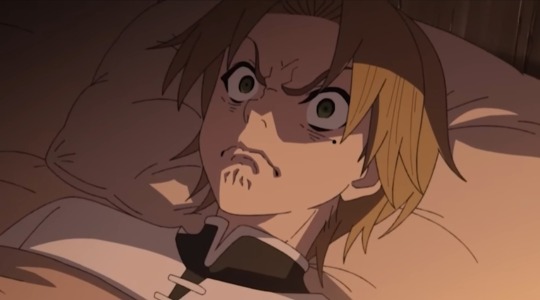
View On WordPress
#Anime#Digimon#Discotek Media#Elon Musk#Good Night World#Kamen Rider Gotchard#Loki#Marvel#Mortal Kombat One#Mushoku Tensei: Jobless Reincarnation#Netflix#Russia-Ukraine Conflict#SAG-AFTRA#Spider-Man Beyond the Spider-Verse#This Week In The Nerd Fandom#Twitter#Uru Okabe#Video Games#Writers Guld of America#X Corp
1 note
·
View note
Photo
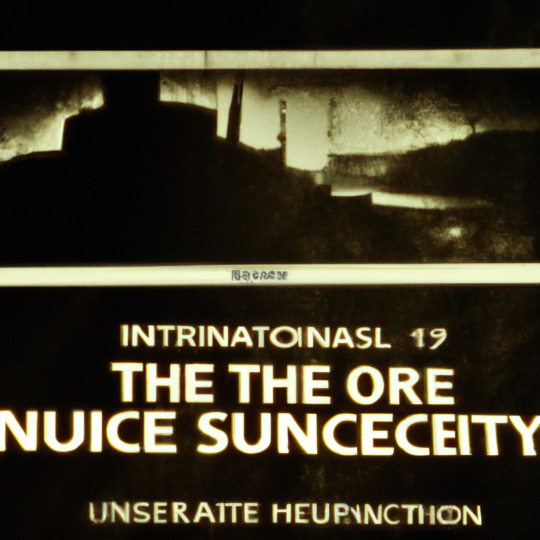
It was a decision centuries in the making, a vow of protection and respect for the history of a people and the sites that they hold sacred. Then, with a single order, it was undone. Ancient walls, replete with stories untold, crumbled against a relentless force. As the dust settled, nothing remained of the proud monuments that had been standing only moments before. UNESCO condemned the tragedy, but it was not enough. No words could ever replace what had been lost, no gesture could ever adequately soothe the sorrow of a people robbed of such a great part of their past. Amidst the rubble, the only thing left to do was to remember.
#Uncategorized#International#rol - international community obligations#ROL - International Justice#ROL - war crimes/humanitarian law#Russia-Ukraine conflict#Russia/FSU#Ukraine#unesco#unesco world heritage site#fault
0 notes
Text
Massive explosion cripples Crimea's Kerch bridge, Russian officials say | CNN
Massive explosion cripples Crimea’s Kerch bridge, Russian officials say | CNN
CNN
—
In a major blow for Russia, a fuel tank explosion early Saturday caused part of Europe’s longest bridge that links Russia to the annexed territory of Crimea to collapse, according to Russian officials.
Russian President Vladimir Putin immediately ordered a “government commission” to examine the Kerch Bridge “emergency” in Crimea, Russian state media TASS reported.
The heads of Russia’s…

View On WordPress
#accidents#conflicts and war#continents and regions#crimea#disasters and safety#eastern europe#europe#explosions#political figures - intl#Russia#russia-ukraine conflict#Ukraine#unrest#Vladimir Putin
10 notes
·
View notes
Text
Wagner's Prigozhin apparently seen in public for first time since failed mutiny
CNN
—
A video emerged on Wednesday that appears to show Wagner founder Yevgeny Prigozhin greeting his fighters in Belarus, in what would be his first public appearance since he led an armed rebellion in Russia last month.
“Welcome guys! I am happy to greet you all. Welcome to the Belarusian land! We fought with dignity! We have done a lot for Russia,” a man resembling and sounding like…

View On WordPress
#2023 russia paramilitary rebellion#alexander lukashenko#belarus#brand safety-nsf sensitive#brand safety-nsf war and military#conflicts and war#continents and regions#domestic alerts#domestic-international news#eastern europe#europe#iab-war and conflicts#military#misc organizations#misc people#paramilitary and militia#political figures - intl#russia#russia-ukraine conflict#ukraine#unrest#vladimir putin#wagner group#yevgeny prigozhin
0 notes
Text
Kyiv ‘cannot let Putin steal Christmas’
Kyiv ‘cannot let Putin steal Christmas’
The mayor of Kyiv has said the city “cannot let Putin steal our Christmas” as Ukrainians prepare to celebrate the festive season with darkened trees.
As Russian airstrikes knock out power and wreak havoc on critical infrastructure, Kyiv’s mayor Vitaly Klitschko said Christmas trees will be erected across the Ukrainian capital to mark Christmas and the New Year.
Klitschko’s call comes after weeks…

View On WordPress
1 note
·
View note
Link
The Russo - Ukrainian war has caused Europe's largest refugee crisis since World War II. It has killed hundred of thousands people in causality. The
0 notes
Text
Far from Bakhmut, an intense fight in trenches and minefields | CNN
Krasnohorivka, Ukraine
CNN
—
In the town of Krasnohorivka, grim Soviet-era apartment buildings stand nearly but not quite empty, with only a few residents remaining. Blocks on the southern edges of town are burned shells, windows shattered and awnings dangling in the winter breeze. Houses are largely shuttered; their tenants long gone. The central square is abandoned and eerie.
On Wednesday,…
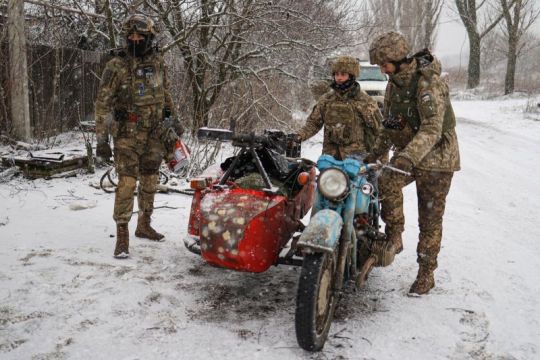
View On WordPress
#bombs and explosive devices#brand safety-nsf sensitive#brand safety-nsf war and military#brand safety-nsf weapons#conflicts and war#continents and regions#domestic alerts#domestic-international news#eastern europe#europe#landmines#military#military weapons#russia#russia-ukraine conflict#ukraine#unrest#weapons and arms
0 notes